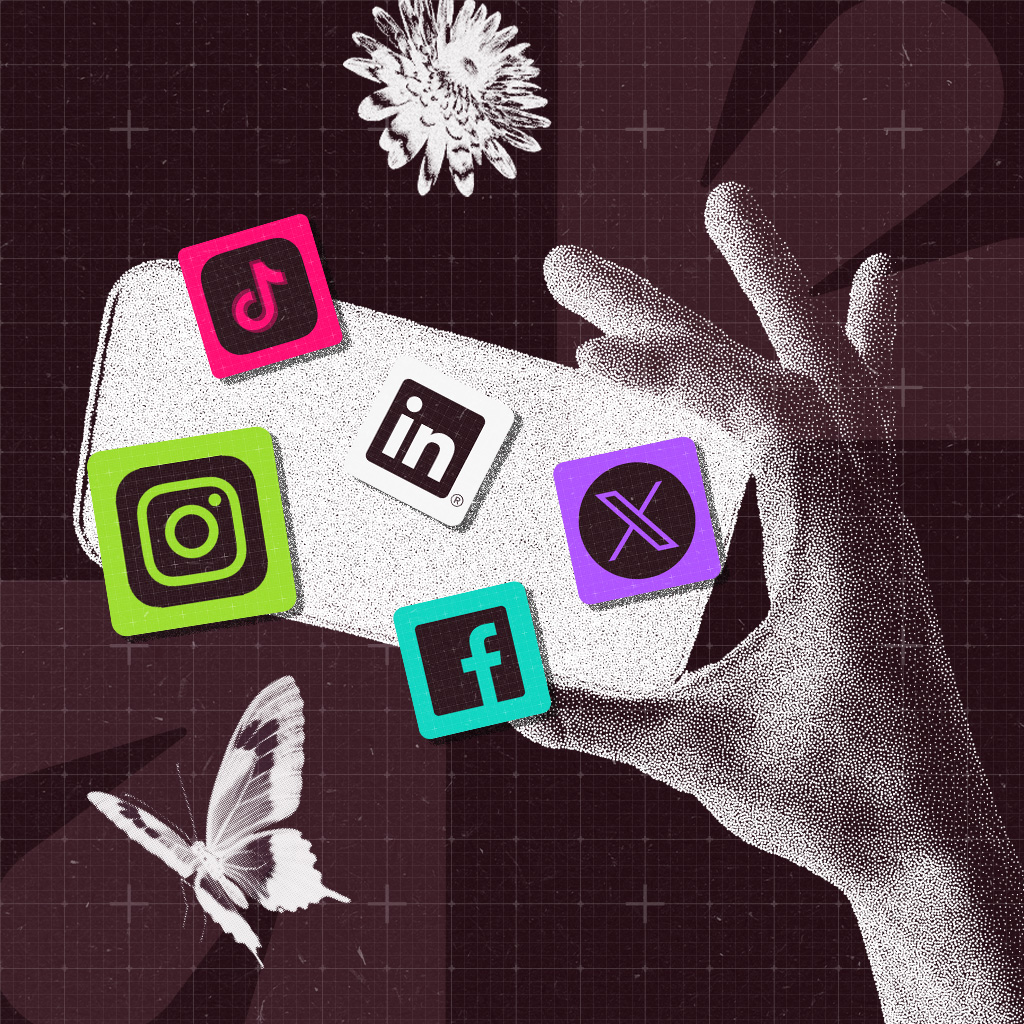“Social-first” is one of those shiny buzzwords that’s been banded around B2B circles for the last few years.
“What does it mean? Why is it important? And how the hell do you implement it?” we hear you yell from behind your screens.
Fear not. We’ve got you covered.
What does “social-first” mean?
It means consciously creating campaigns and content with social media in mind, rather than treating the channel as an afterthought.
For example, using LinkedIn as the main platform for your next brand awareness campaign, rather than spreading resources thinly across all channels. Or collaborating with an influencer to create thought leadership videos for YouTube rather than publishing a traditional 5000 word PDF.
Why is social-first important in 2025?
- 75% of B2B buyers use social media to research potential vendors. Even though it’s one of the biggest channels at your fingertips, it’s often underutilised and under-prioritised by brands when it comes to campaign delivery.
- 88% of C-Suite leaders use social media daily, and they’re not just on LinkedIn – 1 in 2 are now active on TikTok. Brands need to expand their reach and utilise new channels if they’re to make an in impact.
- B2B content can be pretty… dull. “The Extraordinary Cost of Dull” revealed that a 20-second film of a cow in a field generates more of an emotive response from people than 25% of B2B ads do.
The Radish Two Cents
Almost all B2B brands can do more to inspire and entertain audiences across social platforms. A great social presence is critical for building relationships with passive buyers and staying front of mind for when they’re ready to convert. If 90% of buyers are going to go with a brand they already know, isn’t it worth investing in a social-first approach?
Enough on the WHY. Let’s get to the good stuff: the HOW.
Here’s what you need to master social-first brand activity and build social-first campaigns.

Social-first brands have got a consistent, clearly identifiable social presence. You don’t need to be across every channel, and you don’t need to be posting daily. But you do need a well-considered approach to organic social that contains the following:
- A clearly-defined vision (decide how you’ll look and sound on your chosen channels, and identify what topics you’ll talk about).
- Cultural buy-in and support (unify paid, organic, marketing, PR and influencer activity into one calendar and encourage employees to engage with posts, and create their own content).
- Channel-specific strategies + content calendars (use data to decide what channels and topics work for your brand and audience, and create content streams for each that include both evergreen and reactive content).
- Community management (Respond to people’s interactions on your page and actively engage with prospects and other brands).
- Optimisation strategy (frequently test and measure different content formats, topics and posting times to learn what your audience engages with the most).

Regardless of what campaign you’re working on, whether it’s ABM, brand or demand gen, there is always an opportunity to utilise social media to maximise its impact. To ensure your campaign is social-first, following these steps:
- Use social listening to identify which channels your target audience are actively using, and then add these into your GTM approach.
- Provide social selling training and support, and launch employee engagement initiatives alongside campaign activity to maximise reach and impact.
- Atomise campaign content to suit each channel, i.e. turn your research report or thought leadership guide into a video series for TikTok or value-led carousels for LinkedIn.
- Co-create content with external influencers, brand ambassadors and internal thought leaders/experts to build credibility.

One of the biggest pitfalls B2B brands face when it comes to embodying a social-first mindset is fear. Fear of trying new things on social (and getting zero likes or reshares). Fear of creating content that provokes an emotional reaction. Fear of investing time and money into social without knowing how to measure its success.
That’s why you need a culture of creativity across your organisation and a commitment to originality. If senior leaders in a business back this social-first approach, then employees will have the freedom to try new formats, push creative boundaries, and create content that educates, inspires and entertains. This combination of activity will elevate brand awareness, strengthen community building and maximise the impact of campaigns in today’s very noisy landscape.
Sounds bloody brilliant to us.
Taking the next step
Our advice? Start small. Think of one new idea you can try on LinkedIn this week and actually do it. It could be a witty carousel inspired by brands like Surreal, or a 30-second Reel of the team at an event. It could even be a quick LinkedIn poll asking what podcast your followers are listening to this month.
Remember, every post is an opportunity to get your brand in front of prospects – so why wait?


 Selbey Anderson Group of agencies
Selbey Anderson Group of agencies